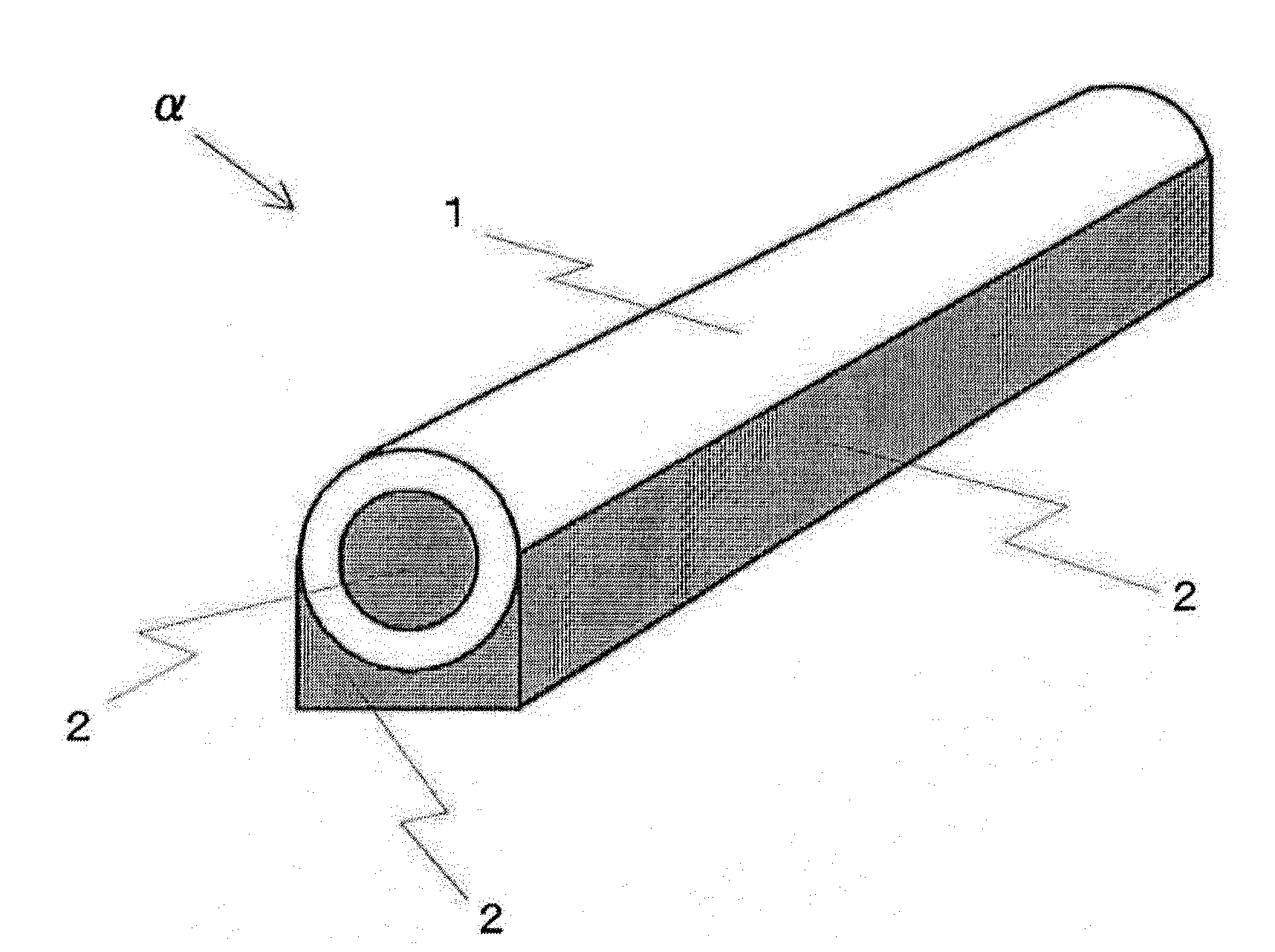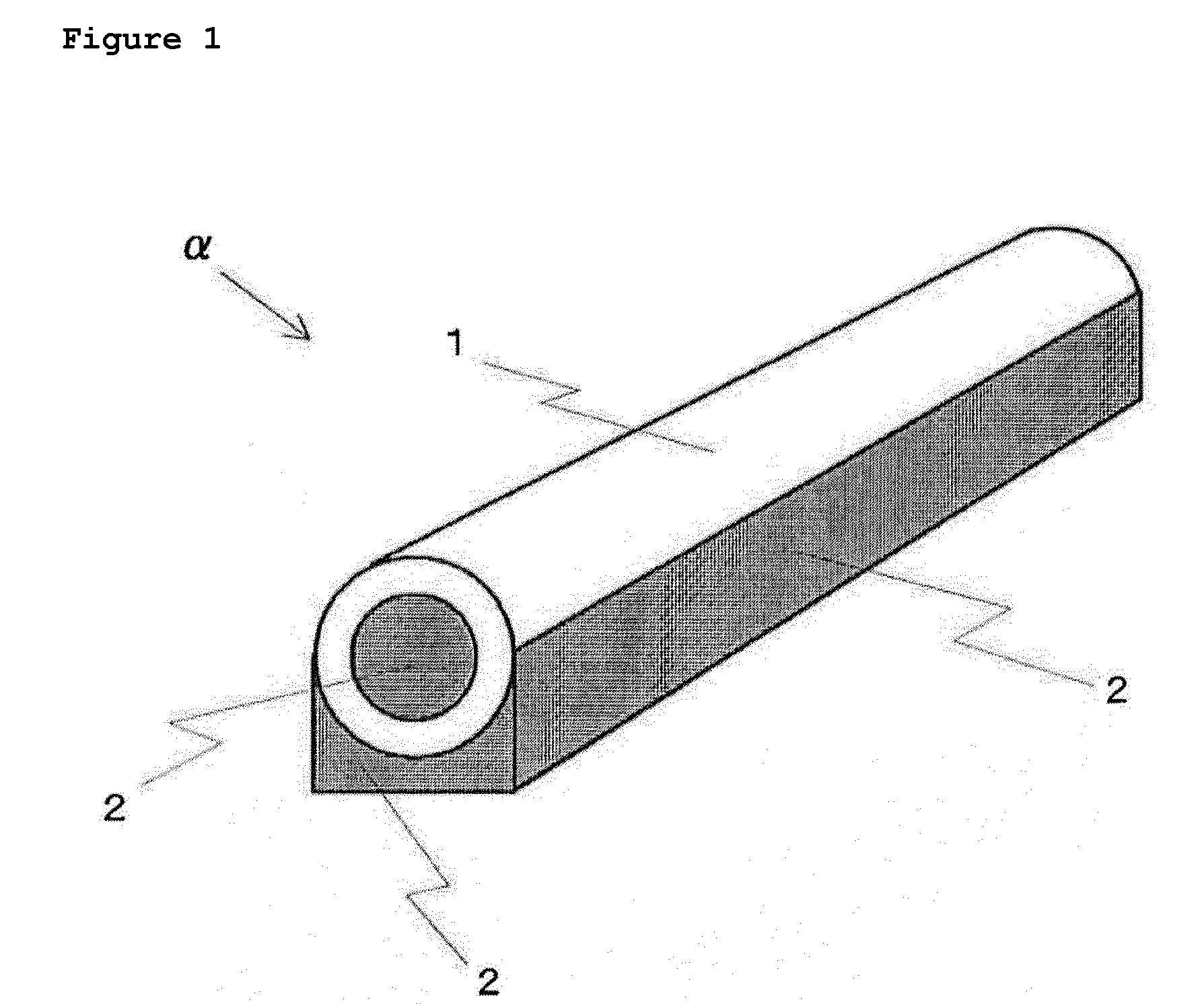Photocurable resin composition for forming support regions
a technology of photocurable resin and support region, which is applied in the field can solve the problems of low quantity of photocurable resin, difficulty in producing multi-coloured fabricated 3d objects or fabricated 3d objects with different properties, and large storage container (the fabrication tank) for holding a large amount of photocurable resin composition, etc., and achieves sufficient support performance, excellent photocuring properties, and low viscosity
- Summary
- Abstract
- Description
- Claims
- Application Information
AI Technical Summary
Benefits of technology
Problems solved by technology
Method used
Image
Examples
working examples
[0103]Below, the present invention is explained in more specific terms by means of working examples, but this invention is not to be restricted in any way to these examples.
[0104]In the examples below, the measurement of the viscosity of the photocurable resin composition used for the support regions, the evaluation of the photocurability of the photocurable resin composition used for the support regions, and the evaluations of the supporting performance of the support regions in the fabricated 3D object formed by photochemical fabrication, the removal thereof by means of a water jet and the water solubility thereof, were respectively carried out in the following manner.[0105](1) Viscosity of the photocurable resin composition used for the support regions.
[0106]The viscosity of the photocurable resin composition used for the support regions was measured at a temperature of 25° C. with a B-type viscometer (model BII) manufactured by the Toki Sangyo Co.[0107](2) Evaluation of the phot...
working example 1
[0136](1) A photocurable resin composition for the support regions (the resin composition viscosity measured at 25° C.=64 mPa·s) was prepared by mixing together at room temperature: 6 parts by mass of N-hydroxyacrylamide (produced by the KJ Chemicals Corp.), 9 parts by mass of acryloyl morpholine (produced by the KJ Chemicals Corp.), 5 parts by mass of polyethylene glycol diacrylate (molecular weight of the polyethylene glycol region=600) (“NK-A-600” produced by the Shin-Nakamura Chemical Co.), 50 parts by mass of propylene glycol, 15 parts by mass of glycerol, 3 parts by mass of diglycerol, 12 parts by mass of polypropylene glycol (molecular weight 400) (“Polypropylene Glycol 400”, produced by Univar Inc.), 0.5 parts by mass of 1-[4-(2-hydroxyethoxy)-phenyl]-2-hydroxy-2-methyl-1-propan-1-one (“Irgacure 2959” produced by BASF) and 300 ppm of phenothiazine (polymerization inhibitor).[0137](2) The test piece α shown in FIG. 1 (a fabricated 3D object with attached support regions) was ...
working examples 2 to 4
[0139](1) The photocurable resin composition for the support regions was prepared in the same way as in (1) of Working Example 1 using, respectively, the components shown in Table 1 below. The viscosity of the photocurable resin composition obtained in each case in this way was as shown in Table 1 below.[0140](2) Test piece α shown in FIG. 1 (a fabricated 3D object with attached support regions) was created in the same way as in (2) of Working Example 1 except that the photocurable resin composition for the support regions obtained in (1) above was employed, and when the photocuring performance of the photocurable resin composition used for the support regions at the time of the creation of test piece α was evaluated by the method described above and, furthermore, when the supporting performance of the support regions in the test piece α obtained, along with the removal by jet washing and the water solubility thereof were respectively evaluated in the manner described above, the res...
PUM
| Property | Measurement | Unit |
|---|---|---|
| mass % | aaaaa | aaaaa |
| mass % | aaaaa | aaaaa |
| mass % | aaaaa | aaaaa |
Abstract
Description
Claims
Application Information
 Login to View More
Login to View More - R&D
- Intellectual Property
- Life Sciences
- Materials
- Tech Scout
- Unparalleled Data Quality
- Higher Quality Content
- 60% Fewer Hallucinations
Browse by: Latest US Patents, China's latest patents, Technical Efficacy Thesaurus, Application Domain, Technology Topic, Popular Technical Reports.
© 2025 PatSnap. All rights reserved.Legal|Privacy policy|Modern Slavery Act Transparency Statement|Sitemap|About US| Contact US: help@patsnap.com



